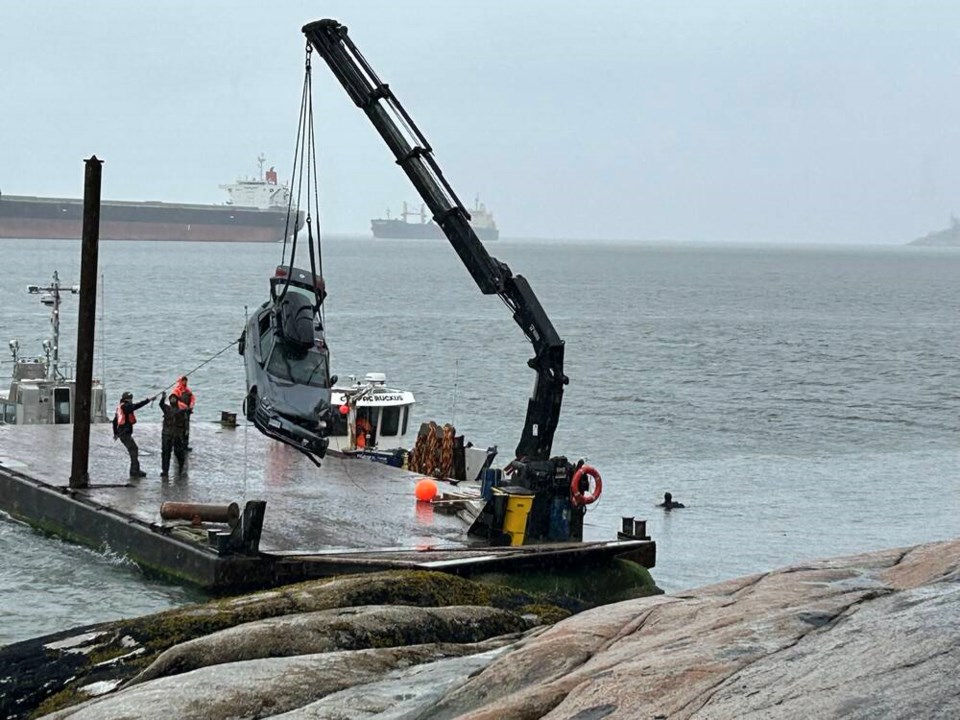Yes, even columnists are capable of changing their longstanding beliefs.
For example: as long as I can remember, I’ve been frustrated by traffic on the North Shore. It feels needlessly pokey. We lack the necessary thoroughfares to meet the increasing demands of commerce and residences, and we know it will only worsen. Some efficiencies could be introduced, but these are at the margins of a major and magnifying problem.
Still, I was winging west on Marine Drive in West Vancouver the other night doing about 55 – yes, beyond the posted limit, but pretty much the prevailing speed – and a Blue Bus was on my tail as if I were holding things up. It turned out I was. I could see in my rear-view mirror four cars behind the bus in a tight convoy. Even in excess speed, I was one of those drivers I normally grouse about.
The next morning I was having coffee at Isetta in a daytime 30-kilometre-per-hour school zone. I conducted an unscientific study of the next 25 vehicles to see how many of them visibly slowed from the 50 km/h limit. I counted four.
And I thought it was time to reconsider my views. Is 50 km/h really the right speed limit any longer on this patch of road?
Nighttime stillness is frequently pierced by sports cars and motorcycles treating Marine Drive like the Circuit de Monaco, and I’m not sure much can be done about the (mostly) boys and their toys after-hours. But the daytime driving is something I’m starting to believe ought to be reconsidered.
Marine Drive, the further we move west, is often without sidewalks yet home to dog-walking, running, walking and cycling (a major site of cycling accidents, it should be noted). Apart from the coffee shop, it’s purely residential. It ought to be slowed west of 25th in the nearly eight-kilometre stretch closing in on Westport Road, where the limit is already 30 km/h.
All told, it’s about a six-minute difference if we’d move to 30, two-and-a-half minutes at 40. We could get a lot for those minutes.
Our population is aged and aging. The 2021 census showed 28.5 per cent of the community was aged 65-plus, up from 25.5 per cent a decade earlier, an indication of a greater need for services and infrastructure tailored to the demography. Which is a polite way for me to acknowledge the reality of driving as we age.
The comparisons are not necessarily apt in all cases, but it bears noting that the city of Victoria (where 23.5 per cent are over 65) is going to reduce most of its streets to 40 km/h and some of them to 30 km/h. By 2027 only two streets will have 50 km/h allowances, and both are six-lane roads connected to highways.
Studies show there are disproportionate safety benefits when the speed limit is reduced -- a 40 per cent speed reduction yields more than a 40 per cent safety improvement.
We naturally know that accidents at lower speeds are less destructive. No less an authority than the World Health Organization notes that the chance of a pedestrian being killed in a collision at 30 km/h is 10 per cent; at 50 km/h, it’s 80 per cent.
Braking distances are cut in half – about 14 metres, instead of 28 – at 30 km/h compared to 50 km/h, meaning a better reward to reflexes. A Toronto study found a reduction of about 28 per cent in pedestrian-motor collisions when the speed limit was reduced to 30 km/h from 50 km/h. In London, England, road casualties declined 42 per cent when the speed limit was lowered to 30 km/h.
West Vancouver’s most recent study on traffic safety largely focused on the high-problem spots: the intersections of Marine and Taylor Way (under provincial jurisdiction), Park Royal North and South, 15th Street, 13th, 14th and 16th, in that order. There was no apparent examination of more westerly Marine.
But I’ve come to believe, the longer I live here, that the wandering, weaving, tempting few kilometres are accidents waiting to happen. The shared roadway leaves too many vulnerabilities. We have a highway option if you’re in a rush. The reduction of the speed limit on that Marine stretch would be a minor inconvenience with a major dividend.
Kirk LaPointe is a West Vancouver columnist with an extensive background in journalism. His column runs biweekly in the North Shore News.





